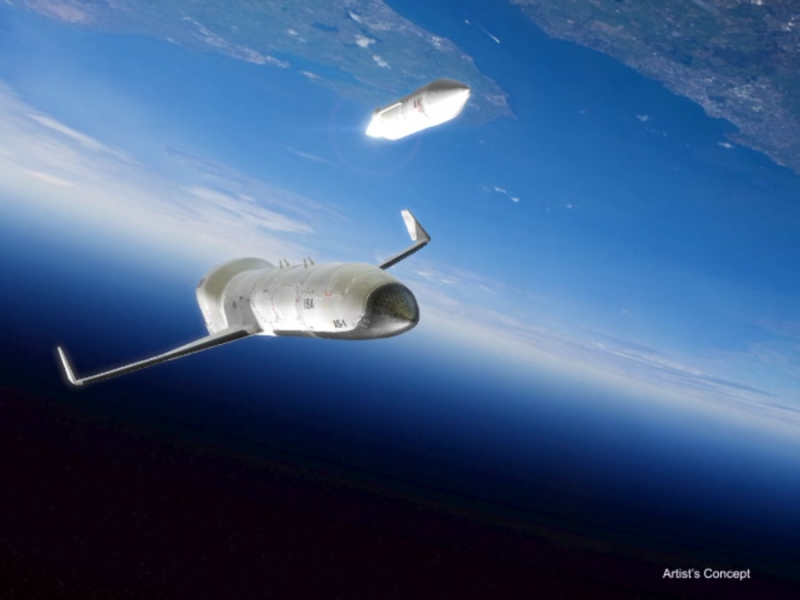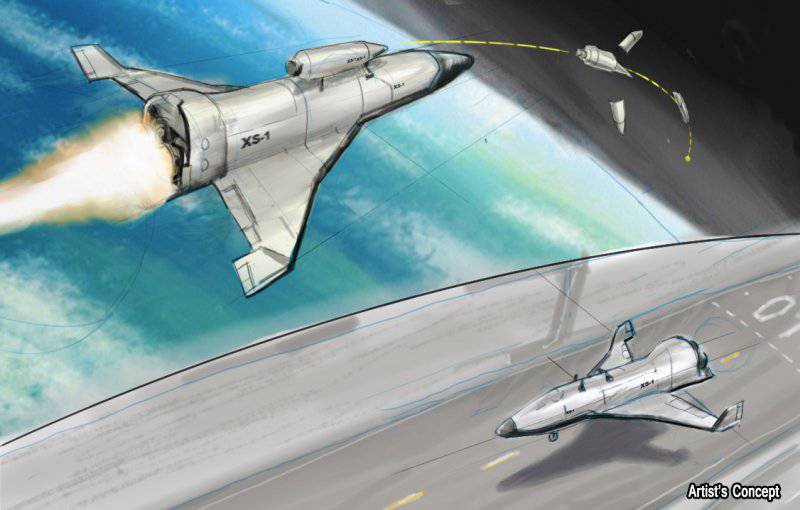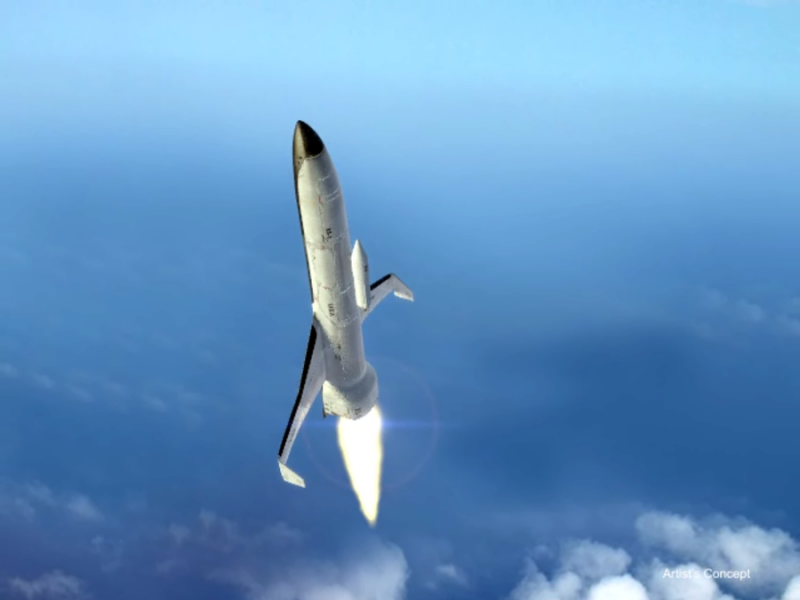In the United States will be funded program to create a space drone XS-1
According to representatives of the agency DARPA, the spaceship will be able to detach from Earth for the first time after all the necessary tests have been carried out, approximately at the end of 2017. The program is recognized as very promising. It is well known that the launch and subsequent operation of an aircraft will require significantly less effort and money than launching launch vehicles. At the same time, it is the latter that are currently launching satellites into earth orbit. Developed countries spend huge financial resources on these elementary, in fact, missions. One of the main goals of creating the XS-1 program in DARPA is precisely the solution to the financial problem.
As part of this program, it is planned to build the first autonomous hypersonic spacecraft, which will fly like an ordinary plane, but it will also be able to take satellites into low Earth orbit at a stage detachable from the vehicle. In July, 2014, DARPA representatives announced the first phase of their project, within which all necessary contracts will be signed. In the long-term plans of the agency to ensure that the unmanned spacecraft XS-1 can make 10 flights in 10 days, at least in one flight having reached the speed of M = 10 (M is the Mach number). The cost of each perfect flight should not exceed 5 million dollars (about 180 million rubles). At the same time, the device will have to carry onboard a payload ranging from 1,36 to 2,37 tons.
It is assumed that the second stage of the launch vehicle will release the payload at the suborbital altitude as soon as it can detach from the main body. The drone itself will return back to Earth and almost immediately begin preparing for the next flights. Representatives of the agency DARPA note that they are going to finance the work of three companies that will work on creating their own demonstrators of the XS-1 unmanned spacecraft. The funds will be allocated to Northrop Grumman Corporation, working with Virgin Galactic, Masten Space Systems, working with XCOR Aerospace, and Boeing, working with Blue Origin.
Jess Sponable, the DARPA Program Manager, notes that the choice of performers was due to the fact that they can perfectly integrate the currently existing technologies with the technological solutions of the future. They will be able to create unmanned spacecraft concise, reliable and easy to use, as well as cost-effective. It is reported that the project will be assessed according to a number of criteria, including low implementation and operation budget, feasibility in practice, performance. In addition, the potential use of the apparatus for military, commercial and civilian purposes will be taken into account.
Among the companies selected for participation in the program, Boeing already has the necessary experience in creating a robotic unmanned aircraft for the needs of the US military. Boeing specialists for the US Air Force created an unmanned spacecraft X-37B, which has been used to carry out secret military missions since December 2012. The new contract with the agency DARPA, according to representatives of the company Boeing, is estimated at 4 million dollars (approximately 144 million rubles).
In the framework of the first phase of the project, along with the creation of a design for a demonstration model, it will be necessary to “develop a plan for the development of technologies related to spacecraft production and flight tests”, as well as “reducing the riskiness of the main technologies”. At the same time, the defense research agency has sufficient funds to finance the work of one of the contractors according to the results of the tender. At the same time, US officials express the hope that more than one space drone will undergo flight tests. Jess Sponable also said that he would be very happy to cooperate with the US Air Force and NASA.
The first stage of the program envisages the development by the participating companies of a mass-dimensional layout. Within this stage, all necessary calculations should be performed to reduce risks in the development, assembly and testing of the main systems, components and technologies of the novelty. Also, companies will have to submit for discussion a plan for the technical improvement of the XS-1 spacecraft for its first flight.
Following the results of the competition, which is to be held in 2015, it is planned to sign a contract for the implementation of the second stage of the ambitious program. The second phase of the project will consist in awarding the company the winner of the competition and demonstrating the first prototype of the XS-1 spacecraft. At the same time, according to plans, after 2, after the demonstration, it will be necessary to start carrying out flight tests of the novelty, and in 2018, to organize the first orbital flight. Upon completion of the test flight program, the winning company will receive a valid contract for small-scale production of the model.
Information that the agency DARPA expects to create an unmanned reusable spacecraft, appeared in February of this year. The prospective spaceship is planned to be used for delivery of a variety of cargo and equipment to low-Earth orbit. The main advantage of the project is the price of one launch of the device, which should not exceed 5 million dollars. Another important condition is that when making a series of launches, the XS-1 unmanned spacecraft should not need to be repaired and maintained. The use of modular solutions in XS-1, automatic control of launch, flight and landing, durable thermal protection systems will significantly reduce the need for material and technical support of the device, which will give a real opportunity to reduce the interval between flights of the suborbital apparatus.
For example: today, for delivering small satellites into Earth orbit, the US Air Force uses four-stage launchers Minotaur IV. The payload of these missiles is 1,73 tons, and the price of one launch of such a rocket is currently about 55 million dollars. Thus, the cost of launches using the XS-1 machine will be at least 10 times lower than the cost of all currently available launch systems. The Ministry of Defense and the US government are pinning great hopes on the new space drone, hoping to seriously develop the space services market.
Information sources:
http://www.arms-expo.ru/news/aviation_and_space/razrabotka_amerikanskikh_voennykh_eksperimentalnyy_kosmicheskiy_samolet_/
http://www.vesti.ru/doc.html?id=1804044
http://www.3dnews.ru/824131
http://www.infuture.ru/article/10414



Information